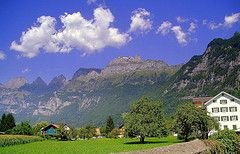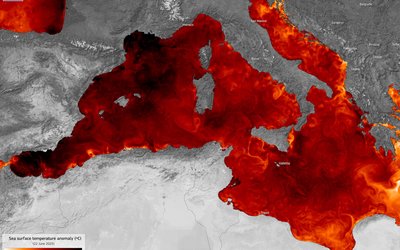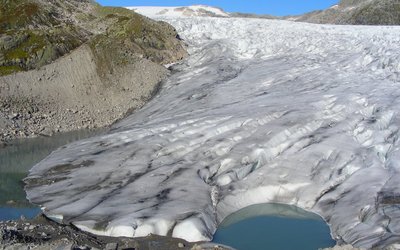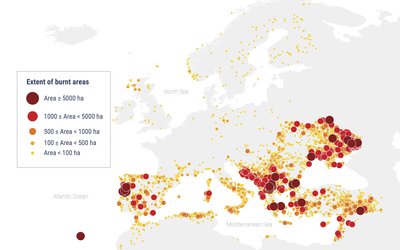
Future development of some key climate indices over Switzerland have been evaluated for the end of the century (2070-2099) with respect to the reference period 1980–2009, based on previously published data on projected temperature and precipitation change (under the emission scenarios A1B, A2, and RCP3PD). For the end of the century model results indicate:
- a doubling of the number of summer days (under the scenarios A1B and A2); summer days are days with maximum temperatures ≥ 25°C.
- an appearance of tropical nights even above 1500 m asl; tropical nights are nights with minimum temperatures ≥ 20°C.
- a possible reduction of the number of frost days by more than 3 months at altitudes higher than 2500 m asl; frost days are days with minimum temperatures < 0°C.
- a decline of the number of ice days by about 90 days above 3000 m asl; ice days are days with maximum temperatures < 0°C.
- a prolongation by roughly 50 days of the thermal growing season length in the lowest parts of Switzerland (under the scenarios A1B and A2); the thermal growing season length is the average number of days in a year between the first occurrence of a 6-day period with daily mean temperatures > 5°C and the first occurrence after July 1 of a 6-day period with daily mean temperatures < 5°C.
- a decline of heating degree days by about 30% until the end of the century; heating degree days are the annual average sum of differences between outside daily mean air temperature and the base temperature inside the building (20°C).
- a likely increase of cooling degree days by about a factor 3 compared to present levels in the Swiss lowlands (under the scenarios A1B and A2); cooling degree days are the annual average sum of differences between outside daily mean air temperature and the base temperature of 18.3°C, above which cooling is assumed to be needed in buildings.
- the near disappearance of days with fresh snow at low altitudes; defined as days with a minimum of 1 cm snowfall.
Source: Zubler et al., 2014. Climatic Change 123: 255–271
Photo: Francisco Antunes (www.flickr.com)








